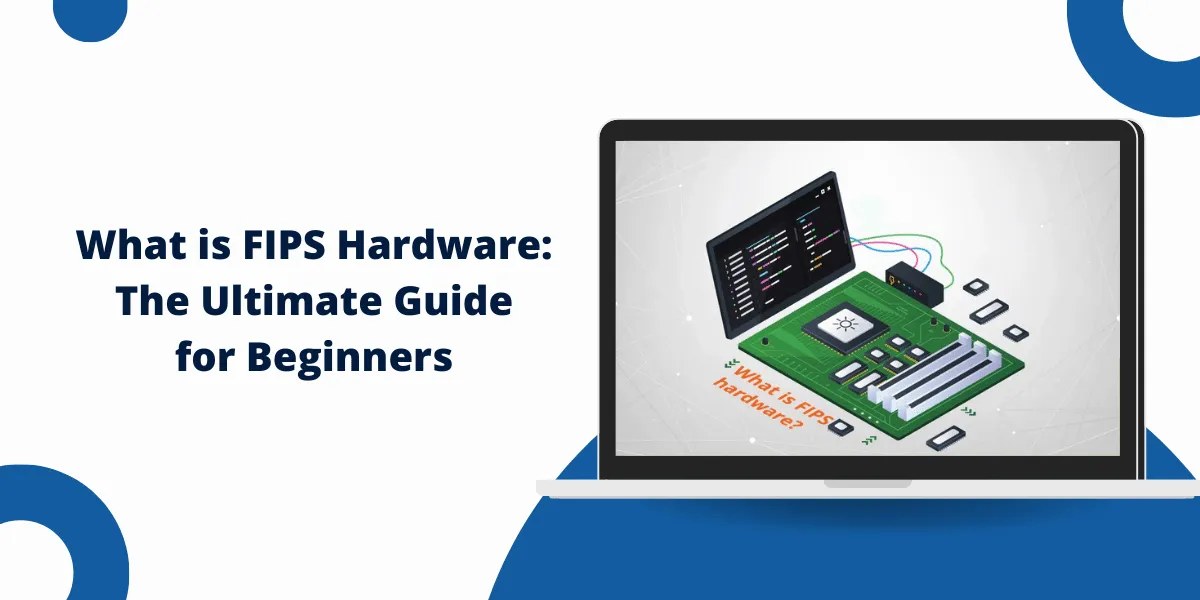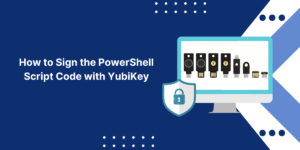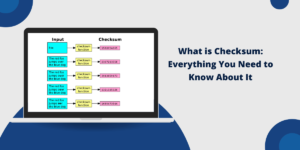What is FIPS Stand for
FIPS stands for Federal Information Processing Standards. FIPS is a set of standards and guidelines for cryptography and computer systems security that the United States federal government develops for use in non-military government computer systems. FIPS Hardware refers specifically to computer hardware that contains cryptographic modules that have been validated to meet FIPS 140 security requirements. The FIPS 140 standard defines security requirements for cryptographic modules that are used to protect sensitive data.
FIPS 140 Security Requirements
The FIPS 140 standard contains four increasing levels of security requirements that cryptographic modules must meet:
Level 1
This provides a basic level of security for cryptographic modules. Level 1 requires:
- Cryptographic module specifications and ports and interfaces are defined.
- Roles and services provided by the cryptographic module are identified.
- A finite state model is established.
- Cryptographic keys and Critical Security Parameters (CSPs) are protected.
- Hardware design ensures CSPs are protected.
- Cryptographic algorithms implemented in firmware/software are FIPS-approved.
- Error conditions do not reveal CSPs.
- Self-tests run during power-up to verify correct operation.
Level 2
This adds tamper-evidence and role-based authentication requirements:
- Includes all requirements from Level 1.
- The cryptographic module detects and responds to tampering attempts.
- The cryptographic module provides role-based authentication (e.g., user and admin roles).
- Identifies operator roles and prevents unauthorized roles from using the module.
- Ensures an operator is authenticated before cryptographic operations are performed.
Level 3
This increases requirements for physical security and protected memory:
- Includes all requirements from Levels 1 and 2.
- Cryptographic module encased in tamper-resistant enclosure.
- Any physical security penetrations are protected against intrusion.
- Memory protection features to prevent unauthorized code execution.
- Critical Security Parameters stored in memory are protected from disclosure.
Level 4
This provides the highest level of security:
- Includes all requirements from Levels 1-3.
- Complete envelope of protection around cryptographic module with tamper detection.
- The cryptographic module is surrounded by a strong enclosure with covert and forced entry detection.
- Zeroization of Critical Security Parameters occurs upon tamper detection.
- Extensive countermeasures against physical attacks were implemented.
- Robust memory protection and encryption mechanisms safeguard CSPs.
Validated FIPS Cryptographic Modules
For a cryptographic module to be considered FIPS 140 compliant, it must be independently validated by an accredited Cryptographic Module Validation Program (CMVP) laboratory. The National Institute of Standards and Technology (NIST) and the Communications Security Establishment (CSE) jointly run the CMVP program.
Cryptographic module vendors contract with CMSE-accredited labs to have their modules tested and validated to confirm they meet the requirements of the FIPS 140 standard at the claimed level of security. If testing is successful, the module receives an FIPS 140 validation certificate with a unique Certificate #.
FIPS 140 validation certifies the cryptographic module works correctly and provides the level of security it claims. However, it does not constitute a product endorsement by NIST or CSE. Validation testing is extensive and typically takes 6-12 months to complete.
Vendors must revalidate updated modules whenever a security-relevant change is made, such as an algorithm or software update. All FIPS 140 validation certificates are publicly listed on the NIST CMVP Validated Modules website.
FIPS 140 Validation Requirements
To achieve FIPS 140 validation, cryptographic modules must meet requirements in 11 security areas:
- Cryptographic Module Specification: Detailed specification document describing the cryptographic module and its interfaces.
- Cryptographic Module Ports and Interfaces: Definitions of all input/output data paths.
- Roles, Services, and Authentication: Supported roles, services, and authentication mechanisms.
- Finite State Model: Model depicting operational states and transitions between them.
- Physical Security: Requirements for tamper evidence, detection, and response.
- Operational Environment: Documentation of policies and procedures for secure operation.
- Cryptographic Key Management: Methods for managing, generating, and zeroizing cryptographic keys.
- EMI/EMC: Tests to ensure the module operates correctly in its electromagnetic environment.
- Self-Tests: Power-up and conditional tests to ensure ongoing cryptographic operation.
- Design Assurance: Evidence demonstrating secure design principles and processes were followed.
- Mitigation of Other Attacks: Protections against attacks like timing analysis, power monitoring, etc.
FIPS 140 validation provides assurance that a cryptographic module was properly designed, developed, and tested by the vendor. However, effective security also relies on the module being deployed and operated correctly by the organization using it. Proper management, policies, and procedures must be established.
Benefits of FIPS 140 Validated Modules
There are several benefits for organizations that utilize FIPS 140 validated cryptographic modules:
- Security Assurance: Validation testing ensures that the module meets cryptography standards and contains the claimed security protections. Thus, organizations can trust that the module works correctly.
- Interoperability: Modules validated to a common standard can interoperate and be integrated securely, and products from different vendors can work together.
- Compliance: Using validated modules may assist in demonstrating compliance with regulations like HIPAA, PCI DSS, etc. Some laws specifically require FIPS 140-validated cryptography.
- Procurement Requirements: Validation provides standardized criteria to specify when procuring cryptographic products. Customers can require vendors to supply validated modules.
- Risk Reduction: Properly implemented and operated, validated modules mitigate the risks of weaknesses, vulnerabilities, and failures that could compromise sensitive data.
For maximum benefit, FIPS 140 validated modules should be integrated with comprehensive policies, procedures, and controls as part of an overall security program.
FIPS 140 and Cryptographic Algorithms
The FIPS 140 standard specifies requirements for the secure design, implementation, and operation of a cryptographic module. It does not regulate the specific cryptographic algorithms used by the module.
The algorithms implemented in a FIPS 140 module must be individually approved and listed on the FIPS 140-2 and FIPS 140-3 Approved Algorithms lists maintained by NIST. These lists contain symmetric encryption algorithms (AES, Triple DES), asymmetric algorithms (RSA, DSA, ECDSA), secure hash algorithms (SHA-1, SHA-2, SHA-3), and other approved crypto schemes.
NIST establishes minimum cryptographic strength requirements over time and will remove algorithms that are deemed insufficiently secure from approved status. For example, Triple DES and SHA-1 have been deprecated and may only be used in legacy applications. New and stronger algorithms like AES and SHA-2/SHA-3 are recommended.
Using up-to-date FIPS 140 validated modules that implement currently approved algorithms assures secure cryptographic capabilities. As algorithms and minimum key lengths are updated, modules may need to be revalidated to maintain compliance and security.
FIPS 140 Revisions
The FIPS 140 standard has gone through several revisions over time:
- FIPS 140-1: First released in 1994, it contained four security levels. She described generic requirements.
- FIPS 140-2: Updated in 2001, widely adopted. Provides 11 areas of crypto module requirements. It’s still active today.
- FIPS 140-3: Published in 2019 with important security updates. It will eventually replace 140-2. Defines new secure operation environments.
The CMVP will accept validation submissions for both 140-2 and 140-3 for a transition period. After 2022-2024, only 140-3 validations will be accepted as 140-2 is phased out.
Key differences in 140-3 include:
- Expanded secure operation environments and operator authentication.
- Additional mitigations for physical attacks and monitoring.
- Enhanced software security through code obfuscation.
- Support for automated update mechanisms.
- Alignment with the latest standards like SP800-56C, ISO/IEC 19790, etc.
FIPS 140 and the Cloud
Traditionally, FIPS 140 validated hardware modules were physical devices like HSMs (hardware security modules) and encryption cards. However, FIPS 140 validation is also possible for cryptographic implementations in software and the cloud.
With FIPS 140-3, additional secure operation environments were defined to support virtualized and distributed computing environments like public cloud platforms. For example:
- Software-hybrid module: Software combined with FIPS 140 validated hardware.
- Software module: 100% software implementation.
- Distributed module: Spreads across networked computers.
This allows organizations to achieve FIPS 140 compliance on public clouds like AWS and Azure using validated software and distributed modules tailored to those environments.
Careful attention must be given to the underlying platform and how the validated module integrates with it. Proper policies, procedures, and configuration controls must also be implemented to maintain security.
FIPS 140 Compliance in Practice
Here is a high-level overview of utilizing FIPS 140 cryptography in an enterprise environment:
Procure and deploy FIPS 140 validated hardware and software modules that implement approved algorithms with sufficient cryptographic strength. Use modules validated to the appropriate level for your security needs.
- Integrate modules into critical systems and infrastructure like databases, web servers, VPNs, etc., where cryptography is required. Utilize modules for encryption, decryption, digital signatures, hashing, key generation, and other functions.
- Establish comprehensive security policies and procedures for managing cryptographic keys, operating, and maintaining modules, handling failures, disaster recovery, periodic revalidation, and more. Document operator roles and responsibilities.
- Carefully configure modules and systems only to allow authorized access and cryptographic usage that is in line with policies. Harden systems enable authentication, restrict networks, and implement other controls to protect the overall infrastructure.
- Manage cryptographic keys throughout their lifecycle according to best practices: ensure strong generation, secure distribution, proper storage, and expiration. Integrate with existing identity and access management solutions.
- Perform ongoing monitoring and testing to detect tampering, errors, or unauthorized changes. Log significant events and monitor for anomalies. Maintain physical security.
- Whenever modules are updated or replaced, ensure they are revalidated to retain FIPS 140 compliance. Review encryption strengths and algorithms periodically to identify the need to phase out obsolete cryptography as standards evolve.
- Consider independent audits and testing to validate the modules are properly deployed and operated securely according to internal policies and external regulations.
Final Thoughts
FIPS 140 validation provides assurance that a cryptographic module was properly designed, developed, and tested to provide the level of security it claims to meet stringent government standards.
Utilizing FIPS 140 cryptography within information systems, implemented according to industry best practices and sound organizational policies, enables organizations to protect sensitive data, demonstrate compliance, and reduce security risks.
Maintaining up-to-date validations and crypto algorithms is essential as standards and minimum strengths evolve to counter emerging threats.
While no standard offers a guarantee of complete security, FIPS 140 validated modules provide a robust, standardized foundation for cryptographic services critical to data protection in the modern era.
FAQs About FIPS Hardware
What types of products can be validated by FIPS 140?
Many types include HSMs, SSL cards, encryption modules, crypto libraries, hardware/software solutions, and cloud-based offerings.
Can commercial off-the-shelf (COTS) products be validated?
Yes, there are many validated COTS products from major vendors like Cisco, IBM, Microsoft, and Oracle.
Does FIPS 140 validation expire?
Yes, modules must be periodically revalidated whenever security-relevant changes occur. Typical revalidation is every 1-2 years.
Does FIPS 140 guarantee the module or data is completely secure?
No standard can guarantee complete security. However, validation provides assurance of correct implementation and operation. Proper policies and controls must also be implemented.
What are the costs for FIPS 140 validation?
It varies by module complexity and validation lab. Testing often costs $30,000: $100,000+ and takes 6-12 months.
Can FIPS 140 modules communicate with non-validated crypto?
Yes, but the validated module must maintain separation and FIPS compliance. Strong policies should govern this integration.
Does FIPS 140 involve algorithm validation?
No, it validates the module implementation. NIST separately validates algorithms for FIPS 140 approved status.

Priya Mervana
 Verified Web Security Experts
Verified Web Security Experts
Priya Mervana is working at SSLInsights.com as a web security expert with over 10 years of experience writing about encryption, SSL certificates, and online privacy. She aims to make complex security topics easily understandable for everyday internet users.



